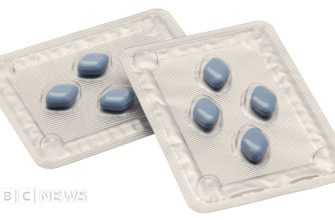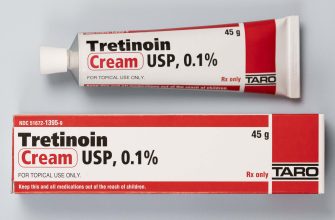Aim for a typical doxycycline dosage of 100mg once or twice daily for moderate to severe acne, but 40mg once daily can minimize side effects while still providing benefit. We adjust the optimal dose according to the severity of your acne and how well you tolerate the medication. Expect to use it for several months for the best results.
Remember to always take doxycycline with a full glass of water to prevent esophageal irritation, and avoid lying down immediately afterward. If you experience stomach upset, taking it with food can help. Dairy products and antacids may interfere with its absorption, so take doxycycline at least two hours before or after consuming them. We will monitor your progress and adjust the dosage as needed.
Be prepared to use effective sun protection, as doxycycline can increase your skin’s sensitivity to sunlight. Also, discuss any other medications you are taking with your doctor, particularly blood thinners, as doxycycline can interact with them. If you have any signs of an allergic reaction like hives or difficulty breathing, stop taking the medication and seek medical help immediately.
We typically prescribe this antibiotic for three to six months, with regular check-ups to assess its impact on your skin. If your acne clears up sooner, we might consider a lower maintenance dose or alternative treatments to prevent recurrence.
Doxycycline Dosage for Acne Treatment
Usually, adults take 100mg of doxycycline twice daily on the first day, followed by a maintenance dose of 100mg once daily. Some doctors prescribe 40mg once a day. The exact dosage for your specific situation will be determined by your dermatologist, who will consider the type and severity of your acne and your overall health. Always follow your doctor’s instructions precisely.
It is recommended that you take doxycycline with a full glass of water and avoid lying down immediately after taking it. Food can affect absorption. Follow your doctor’s advice on whether or not you should take doxycycline with food.
Important Dosage Considerations
- Length of Treatment: Doxycycline treatment for acne usually lasts several weeks or months. Your doctor will monitor your progress and determine the optimal duration.
- Missed Doses: If you miss a dose, take it as soon as you remember. If it’s almost time for your next dose, skip the missed dose and continue with your regular schedule. Don’t double your dose.
- Complete the Course: Even if your acne improves, finish the entire course of doxycycline prescribed by your doctor. Stopping early can lead to antibiotic resistance.
Be sure to discuss any other medications you are taking with your doctor before starting doxycycline. Certain drugs, like antacids and supplements containing iron, calcium, or magnesium, can interfere with doxycycline absorption. Also, be aware of potential side effects and notify your doctor if you experience any unusual symptoms.
Starting Dosage: Initial Acne Treatment
Begin doxycycline treatment for acne with 100 mg, taken twice daily, for the first week. This loading dose helps quickly establish therapeutic levels in your body, targeting acne-causing bacteria.
After the initial week, reduce the dosage to 100 mg once daily. This maintenance dose helps sustain the antibiotic’s effect and minimize potential side effects.
Take doxycycline with a full glass of water to prevent esophageal irritation. Avoid lying down immediately after swallowing the capsule.
Timing matters. Take your doxycycline dose at the same time each day to maintain consistent drug levels. Be consistent!
Important: Avoid taking doxycycline with milk or calcium supplements. These can interfere with its absorption and reduce its effectiveness.
Listen to your doctor: They might adjust your dosage based on your individual response, the severity of your acne, and any other medications you are taking. Notify your doctor if you have any concerns.
Be aware that it takes several weeks to see noticeable improvement in your acne. Continue taking the medication as prescribed, even if you don’t see results immediately.
Maintenance Dose: Long-Term Acne Control
Consider a lower maintenance dose of doxycycline after completing the initial acne treatment to sustain clearer skin. Typically, doctors prescribe 20-40 mg of doxycycline daily for long-term acne control, significantly lower than the initial treatment dose.
Discuss this option with your dermatologist. The precise dose depends on how well your skin responded to the initial treatment and the severity of your acne. Regular check-ups help monitor side effects and adjust the dosage if needed.
How to Take Doxycycline for Maintenance
Administer doxycycline with a full glass of water to avoid throat irritation. To minimize stomach upset, take it with food. Stick to the established schedule of taking your medicine consistently. If you miss a dose, take it as soon as you can. However, if it’s almost time for your next dose, skip the missed dose and proceed with your regular schedule. Do not double the dose to compensate for the missed one.
Potential Side Effects to Monitor
Be aware of potential side effects, such as photosensitivity. Reduce this risk by wearing protective clothing and sunscreen. Some individuals report gastrointestinal issues; taking probiotics may help. Report any persistent or concerning symptoms to your doctor. Also, if you are a woman, talk to your physician regarding using birth control while on doxycycline, as it can affect the efficacy of some medications.
Adjusting Dosage: When and How
Lower your doxycycline dosage if you experience significant gastrointestinal upset, such as nausea or diarrhea. If you are prescribed 100mg twice daily, discuss with your doctor reducing to 100mg once daily after the initial weeks of treatment demonstrate visible improvement in your acne. Monitor your skin closely for any resurgence of acne when you reduce the dosage.
Consider a dose adjustment based on kidney function. If you have impaired kidney function, your doctor might prescribe a lower dosage to prevent drug accumulation. Your creatinine clearance rate helps determine the suitability of standard doxycycline dosages.
Adjust the timing of your dose relative to meals to minimize side effects. Taking doxycycline with food can alleviate stomach upset, but avoid consuming dairy products or calcium-fortified foods concurrently, as these can interfere with absorption. Instead, take your medication an hour before or two hours after consuming such items.
Assess your response to the initial course. If your acne shows no signs of improvement after 6-8 weeks at the prescribed dosage, communicate this to your doctor. Increasing the dosage isn’t always the answer; alternative or adjunctive therapies may be more suitable. Your doctor can properly evaluate whether a dosage increase is needed or if you require another course of action.
If you’re also taking other medications, inform your physician. Certain drugs, like antacids containing aluminum, calcium, or magnesium, can affect doxycycline absorption. Your doctor might advise adjusting the timing of these medications or modifying your doxycycline dosage to maintain its effectiveness. Never make these adjustments without consulting your doctor.






